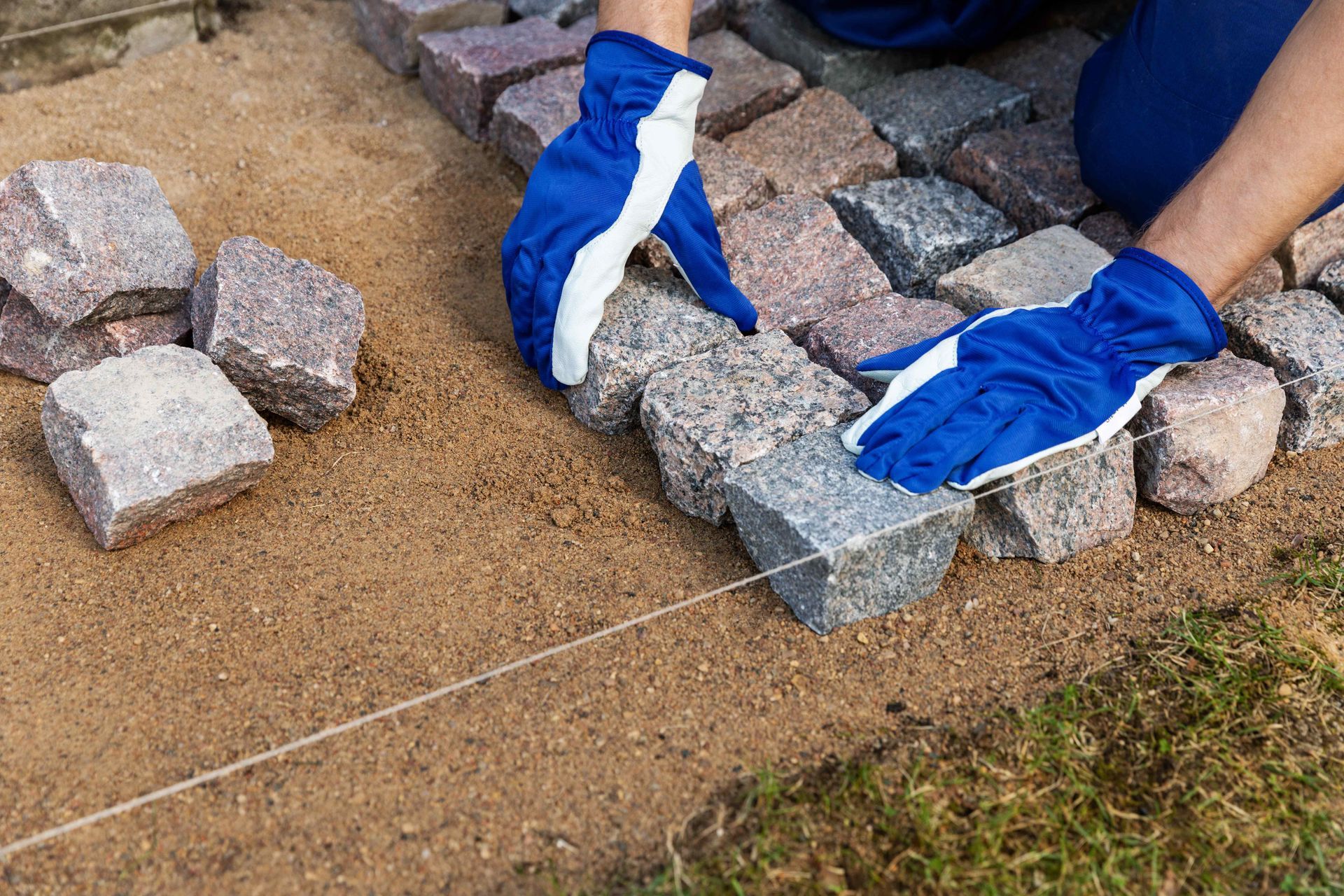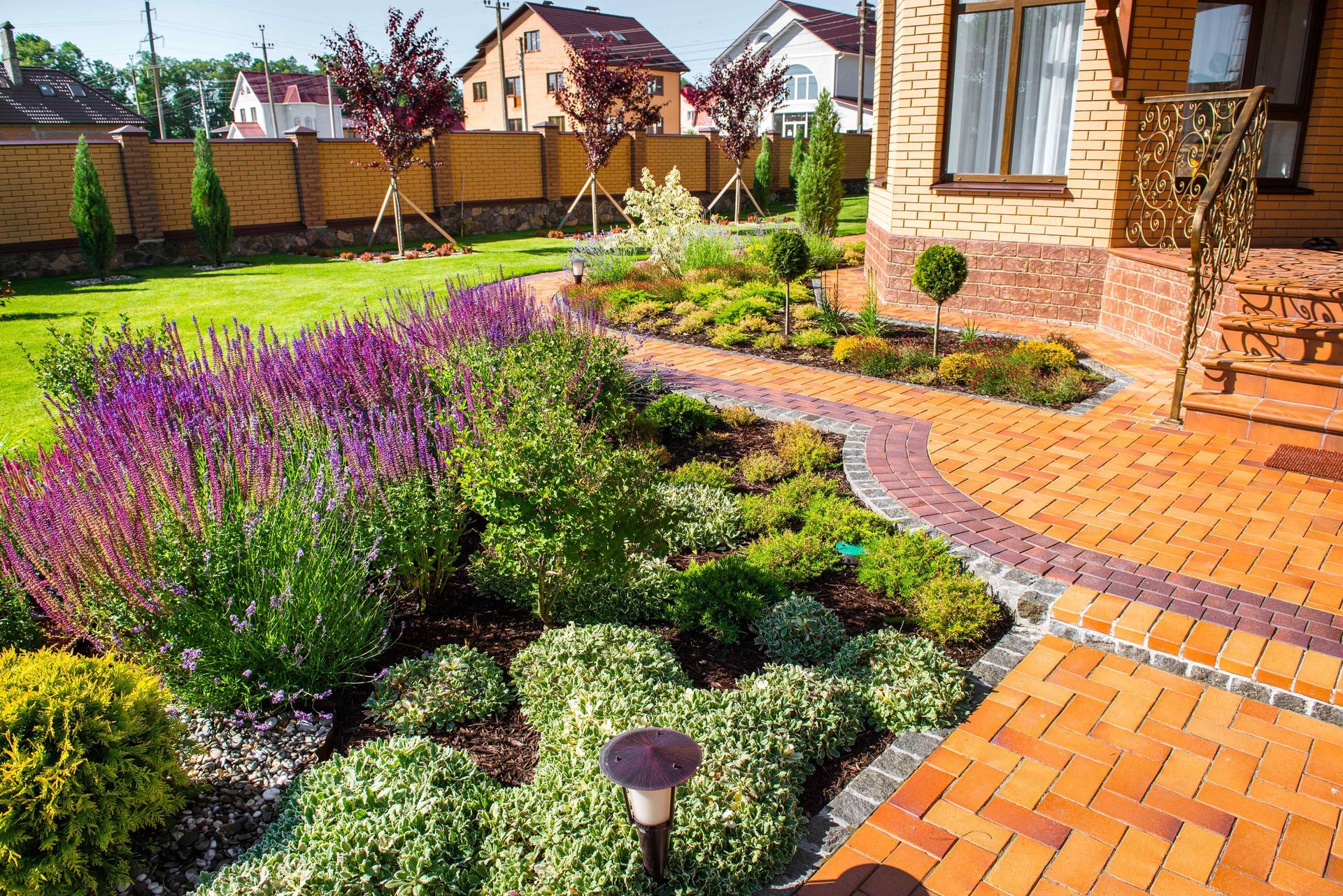Xeriscaping vs. Hardscaping: Striking the Balance for a Sustainable Landscape
Creating a sustainable outdoor space that enhances the beauty of your property involves thoughtful decision-making. Two prominent landscaping approaches that often emerge in this context are xeriscaping and hardscaping. In this post, we'll explore the differences between xeriscaping and hardscaping. We want you to be able to make informed choices for a landscape that harmonizes with your environmental values.
Understanding Xeriscaping
Xeriscaping is a landscaping technique designed to conserve water while creating an environmentally friendly outdoor space. Key features of xeriscaping include:
- Water-Efficient Plants. Xeriscaping emphasizes the use of native and drought-tolerant plants that thrive with minimal water requirements.
- Smart Irrigation. Efficient irrigation systems, such as drip irrigation and soaker hoses, are used to deliver water directly to plant roots, minimizing waste.
- Mulching. Mulch is applied to the soil surface to reduce evaporation, suppress weeds, and regulate soil temperature.
- Soil Improvement: Healthy soil is crucial for water retention. Xeriscaping often involves soil amendments with organic matter to enhance its water-holding capacity.
Benefits of Xeriscaping
- Water Conservation. The primary advantage of xeriscaping is its significant reduction in water consumption. This makes xeriscaping an ideal choice in regions facing water scarcity.
- Low Maintenance. Xeriscapes are designed to be low-maintenance, requiring less water and care compared to traditional landscapes.
- Resilience to Climate Conditions. Xeriscapes are designed for the local climate, making them resilient to fluctuations in temperature and precipitation.
Understanding Hardscaping
Hardscaping involves the use of non-living elements to enhance the functionality and aesthetics of outdoor spaces. Common hardscape features include:
- Patios and Walkways. Paved areas using materials like pavers or natural stone provide functional spaces for outdoor activities.
- Retaining Walls. These structures help control soil erosion, create terraced landscapes, and add visual interest to the landscape.
- Outdoor Structures. Elements like pergolas, gazebos, and arbors contribute to the architectural appeal of the landscape.
- Water Features. While xeriscaping includes water-efficient features, hardscaping incorporates elements like fountains, ponds, or waterfalls for aesthetic purposes.
Benefits of Hardscaping
- Defined Spaces. Hardscaping creates well-defined areas for various activities, contributing to a structured and organized outdoor layout.
- Durability. Hardscape elements are durable and long-lasting, requiring less frequent replacement or maintenance compared to living landscaping elements.
- Aesthetic Variety. Hardscaping provides an opportunity to incorporate diverse materials and design elements, adding visual interest to the landscape.
Xeriscaping vs. Hardscaping: Finding the Balance
- Water Efficiency vs. Aesthetics. Xeriscaping focuses on water efficiency, while hardscaping offers aesthetic variety. Striking a balance involves integrating water-efficient plants within well-designed hardscape areas.
- Environmental Impact. Xeriscaping minimizes the environmental impact by reducing water usage and promoting native plants. Hardscaping materials and construction can have a larger environmental footprint.
- Maintenance Considerations. Xeriscapes generally require less maintenance than traditional landscapes, but all landscapes may need occasional cleaning and upkeep.
- Local Climate Adaptation. Xeriscaping adapts to local climates by using region-specific plants. Hardscaping designs can also incorporate local materials, enhancing the landscape's integration with its surroundings.
Conclusion
In conclusion, both xeriscaping and hardscaping have advantages for creating a sustainable outdoor space. While xeriscaping prioritizes water conservation and low-maintenance greenery, hardscaping provides structure, durability, and aesthetic variety.
Striking the right balance between these approaches involves thoughtful planning and personal preferences. Whether you opt for a lush, water-efficient garden or a carefully designed hardscape, the key lies in creating a landscape that reflects your values and enhances your outdoor experience.
You might also like

Contact us now and let's embark on this exciting journey together.
Ready to elevate your outdoor living experience? Contact Premier Gilbert Landscaping today and schedule your consultation. Let us create a landscape that reflects your style, enhances your life, and brings beauty to every moment you spend outdoors.
Remember, your outdoor dreams are just a call away.
All Rights Reserved | Premier Gilbert Landscaping
Powered by webpro.ai



